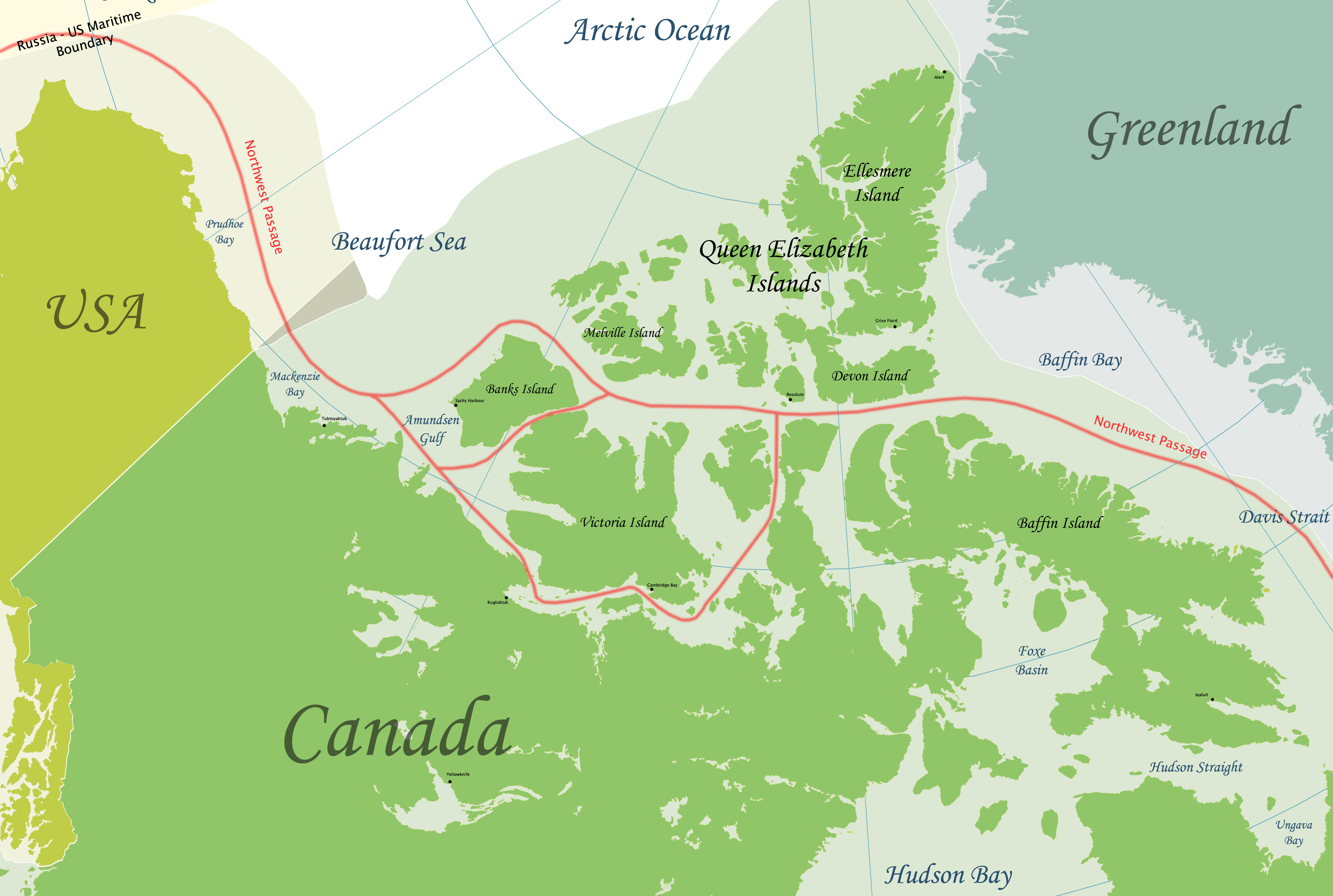The continued Arctic sea ice loss will initiate challenges in conservation management, sovereignty and resource exploitation.
The reductions in minimum sea ice extent will allow navigational access into the Arctic Ocean; the Northwest Passage became available for transportation in 2007 (Figure 1). Between 2010-2011 40 ships travelled through the Northwest Passage while only 69 did during the previous century. This amplified human activity in this pristine environment could lead to increased infrastructure development (SWIPA, 2011; Parry, 2012).

Click figure for larger image.
While general ice conditions are expected to improve, allowing for greater transportation through the Northwest Passage, it is still risky for most ships to attempt during the summer shipping season. The summer of 2014 saw only 17 vessels successfully navigate the Northwest Passage due to a short window of opportunity (Northwest Territories, 2015). Recent ice thickness surveys show that at the start of the summer in May there is still hazardous levels of ice occupying the Northwest Passage. Bodies of thick ice over 4m can still be common and multiyear ice is still present (Haas, Howell, 2015). While it is easier to navigate in late summer when ice levels are at their minimum, shipping through the Northwest Passage should not be taken lightly. It may be may be a number of decades until a long window for safe travel through the Northwest Passage exists (Laliberté, Howell, Kushner, 2015).
Enhanced ship traffic in the high latitude Arctic waters is expected to have a negative impact on marine ecosystems. Stressors associated with Arctic shipping such as chemical spills and accidents, may influence the habitat dynamics of marine mammals and fish among others (WWF, 2011). The World Wildlife Fund ArkGIS program has developed an interactive map tool, which combines human activity and ecosystem data to depict overlaps, connections and possible disturbances. Visit the ArkGIS webpage to explore the map!
As the Arctic Ocean warms, an advantageous opportunity for commercial fisheries arises with southern fish species expected to migrate northward. Overfishing of this unpredictable ecosystem could lead to conservation and management issues. Moreover, with less than adequate maps available, increased fishery ship accidents have been recorded throughout the Arctic (SWIPA Chapter 9, 2011). In addition to the development of fisheries, the pursuit for oil and gas in the Arctic waters has begun. Abundant quantities of natural gas and oil have been estimated to be available (U.S. Geological Survey) and are becoming very accessible with the loss of sea ice (SWIPA, 2011; Parry, 2012).
An additional challenge associated with sea ice loss and augmented sea travel is national boundaries, especially since many nonrenewable resources are located within the oceans. The boundary dispute is between Canada, Russia, Norway, U.S.A and Denmark. The Northwest Passage is of particular concern to Canada, who claims it to be Canadian owned waters. Nevertheless, the United States and other European countries claim it to be international territory. Additionally, Canada and Denmark are in disagreement over the ownership of the uninhabited Hans Island, located between Ellesmere Island and Greenland (Carnaghan & Goody, 2006; Case, 2012).

The Canadian Coastguard Vessel, CCGS Henry Larsen, travelling through Nares Strait in August 2012
Future Research
The following list of recommended future research, compiled by SWIPA (2011), will assist in the understanding of the future of sea ice and the Arctic system:
- Long-term in-situ monitoring of biological systems in the Arctic, with focus on physical responses to sea ice loss and habitat restructuring
- Influences of sea ice loss on Arctic physical system dynamics
- Future role and equilibrium shift of the Arctic Ocean as a CO2 sink
- Effects of changes in nutrient and solar radiation supply
- Predictions of future "biological hotspots" with reduced sea ice habitat
- Current organism adjustments to sea ice loss
- Influence of northern migration of subarctic species
References
Sea Ice Links
Material on this page was provided by Maren Pauly and Tristan Mills, Department of Geography, University of Waterloo
